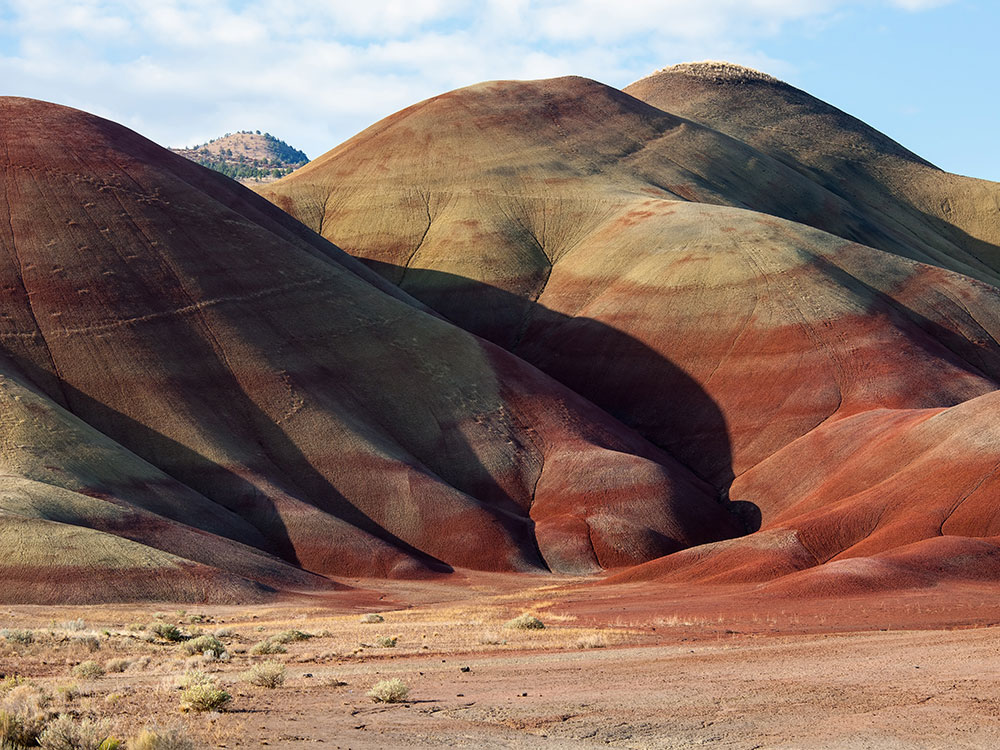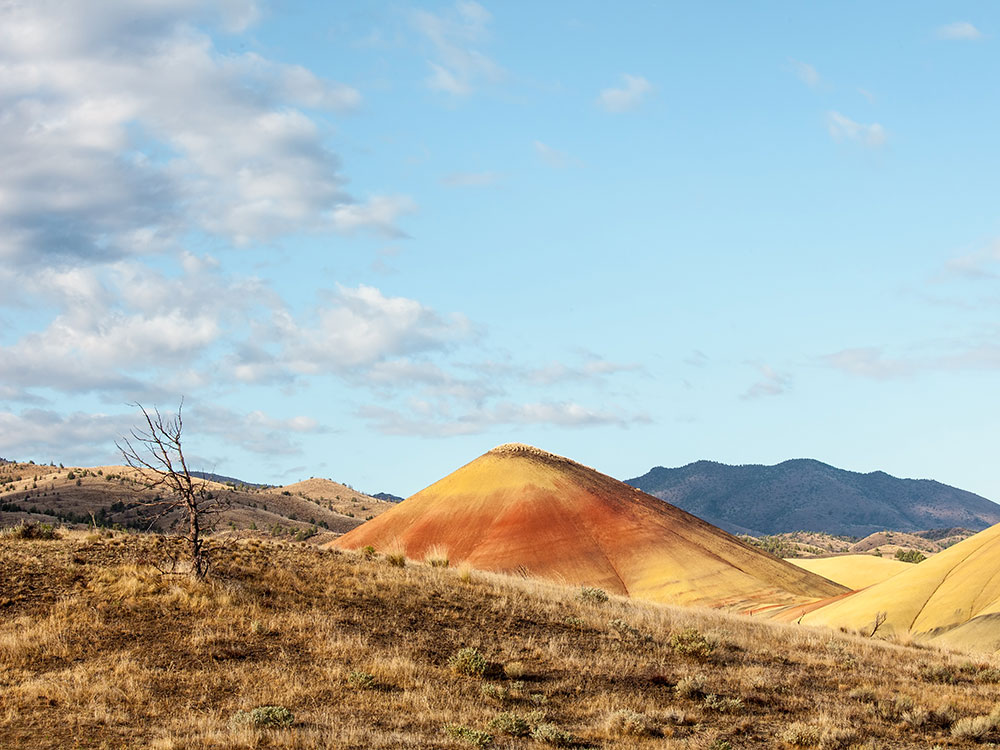Geologic site named for the colorful layers of its hills corresponding to various geological eras, formed when the area was an ancient river floodplain
General Information
The Painted Hills is a geologic site in Wheeler County, Oregon that is one of the three units of the John Day Fossil Beds National Monument along with Sheep Rock and Clarno. It totals 3,132 acres (12.67 km2) and is located 9 miles (14 km) northwest of Mitchell, Oregon. The Painted Hills are listed as one of the Seven Wonders of Oregon. Painted Hills is named after the colorful layers of its hills corresponding to various geological eras, formed when the area was an ancient river floodplain.
The Hills' colors originate from 35 million years ago, when this area was an ancient river floodplain. The colored bands are due to changes in climate that occurred as they were distributed through time. As the climate changed to a more tropical setting with distinct wet and dry seasons, reddish and yellowish layers formed that are made up of laterites, soils rich in iron and aluminum. Red soils come from a more tropical period, while the yellows are from a drier and cooler time. The red coloring is laterite soil that formed by floodplain deposits when the area was warm and humid. The darker, black soil is lignite that was vegetative matter that grew along the floodplain. The grey coloring is mudstone, siltstone, and shale.
An abundance of fossil remains of early horses, camels, and rhinoceroses in the Painted Hills unit makes the area particularly important to vertebrate paleontologists.
This article uses material from the Wikipedia articles "Painted Hills", which are released under the Creative Commons Attribution-Share-Alike License 3.0
This article uses material from nps.gov "John Day Fossil Beds National Monument"

